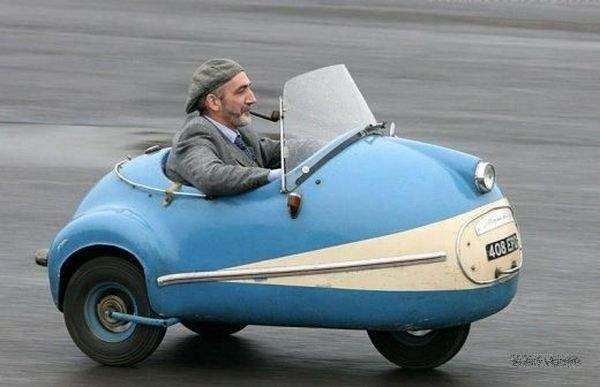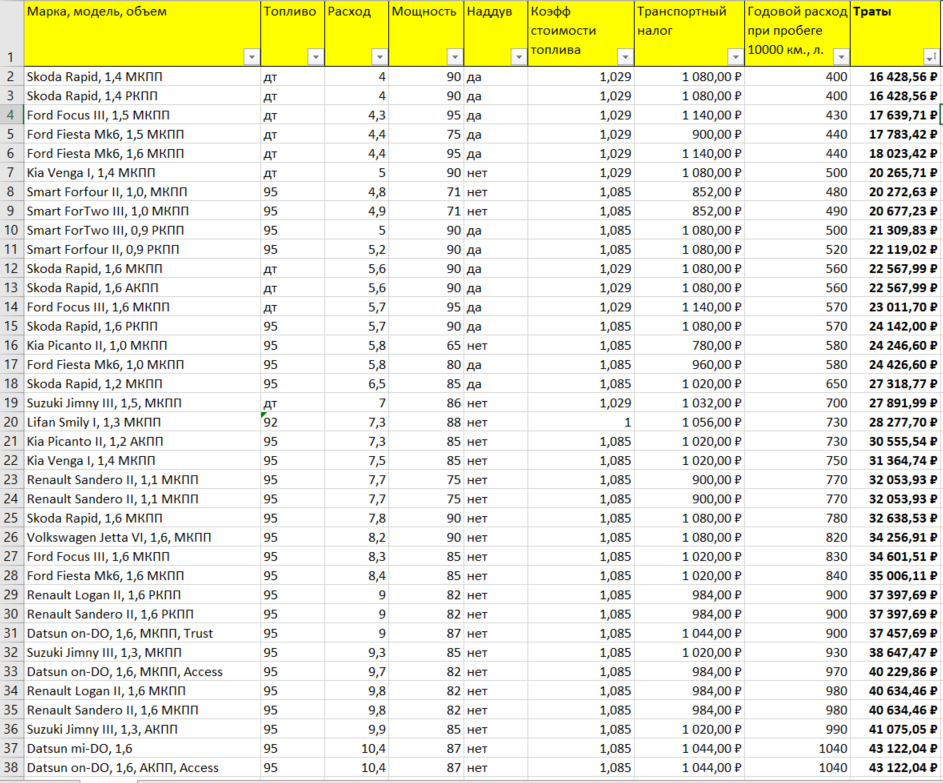Car as a source of expenses or Who has more motor?

Some time ago I published a post on a car-related topic. He caused a lot of disputes, but no one (well, almost no one) reproached me for offtopic. Inspired by this, I bring to the public the thoughts on another car theme that has been a long time disturbing me. Not without big data (well, like big ... well, mediocre) and crowdsourcing ...
Background:
In Moscow and some other regions there is a feature: if you own one machine with a power up to 70 hp inclusive - you do not pay transport tax. I do not like to drive fast (power reserve, safe overtaking, etc., I beg you not to discuss, because we still will not come to a common opinion) and I like to save. Therefore, I choose and buy cars exclusively from the class "less than 70 hp." But then I wondered if I was saving in reality, because besides the tax, I still pay for gasoline ...
')
It was decided to confirm or deny this fact mathematically. For this purpose, the performance characteristics of modern cars (up to 100 hp, 2015 onwards and younger, sold in the Russian Federation) were summarized in one table. In particular, we will need:
- power;
- type of fuel;
- passport consumption in city mode.
I emphasize: I do not compare specific machines, but information. Therefore, the absolute accuracy of my calculations can be “plus or minus kilometer”. But relative to each other, the cars and their motors seem to be positioned.
It takes into account engine power (and, accordingly, tax), fuel costs (taking into account the annual mileage of 10,000 km) and fuel cost ratio (to bring cars on 92nd, 95th and diesel to a common denominator). The result was unexpected for me personally - the smallest cars and engines were not the most profitable.
Baseline data was taken from the catalog of a / m with one old autosay. There is information from the manufacturers, who, undoubtedly, podvirayut about consumption, but do it in sync. So, I repeat, this will not affect the relative picture.
Here is the result, sorted by total cost increase.
Sorry for the picture, I'll explain later ...
The result is not that amazing, but interesting. Small, but "evil" engines are not as economical as one might imagine. And even a small transport tax does not solve the problem. In the trend - small supercharged diesel engines.
Now explanations about the picture and crowdsourcing. As you can see, the selection of cars is small. But it would be much more interesting to see the full range of cars, including the age of 4-6 years. The problem is that I have never been a programmer, so I pulled out the data from the machine catalog with my hands (which is a chore and a long time).
Attention, question. If someone can, in two clicks, pull out the information about the passport characteristics of cars from 2000 onwards from some reliable catalog (core, author ...) and send it to me - I will be glad. I promise to publish the extended table here, with an update. Categories are needed such: "Year of release", "Make / model / modification", "Fuel", "Power, hp", "Consumption, l.", "Aspiration (yes / no)".
On a wider dataset it will be interesting to look at cars up to 70 and more than 100 hp. Let me remind you that the first tax is not paid at all, and for the second there is a progressive rate.
In addition, the test table did not get a lot of cars that were actively sold before the age of 15, but due to problems left the market. But a lot of them are sold (fresh and with low mileage, consider new ones ...).
Thanks for attention.
UPD: The disclaimer should be at the beginning, well ... I'm a fan of ultra-compact cars. I know about comparative crash tests and other fun. But like, I can not help myself. Perhaps the case in the depressed complexes, and this post - an attempt to justify their perverted love :)
Source: https://habr.com/ru/post/403935/
All Articles